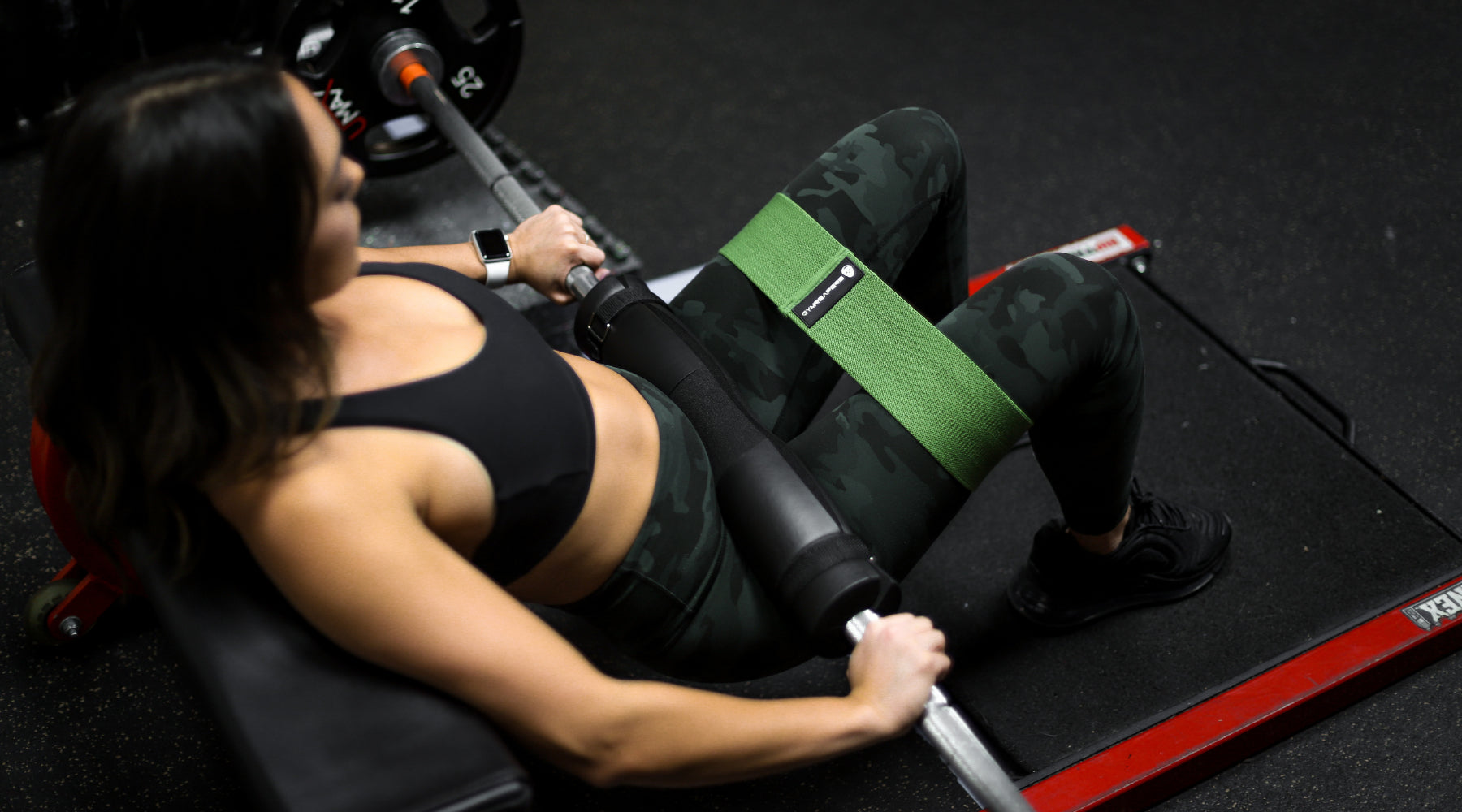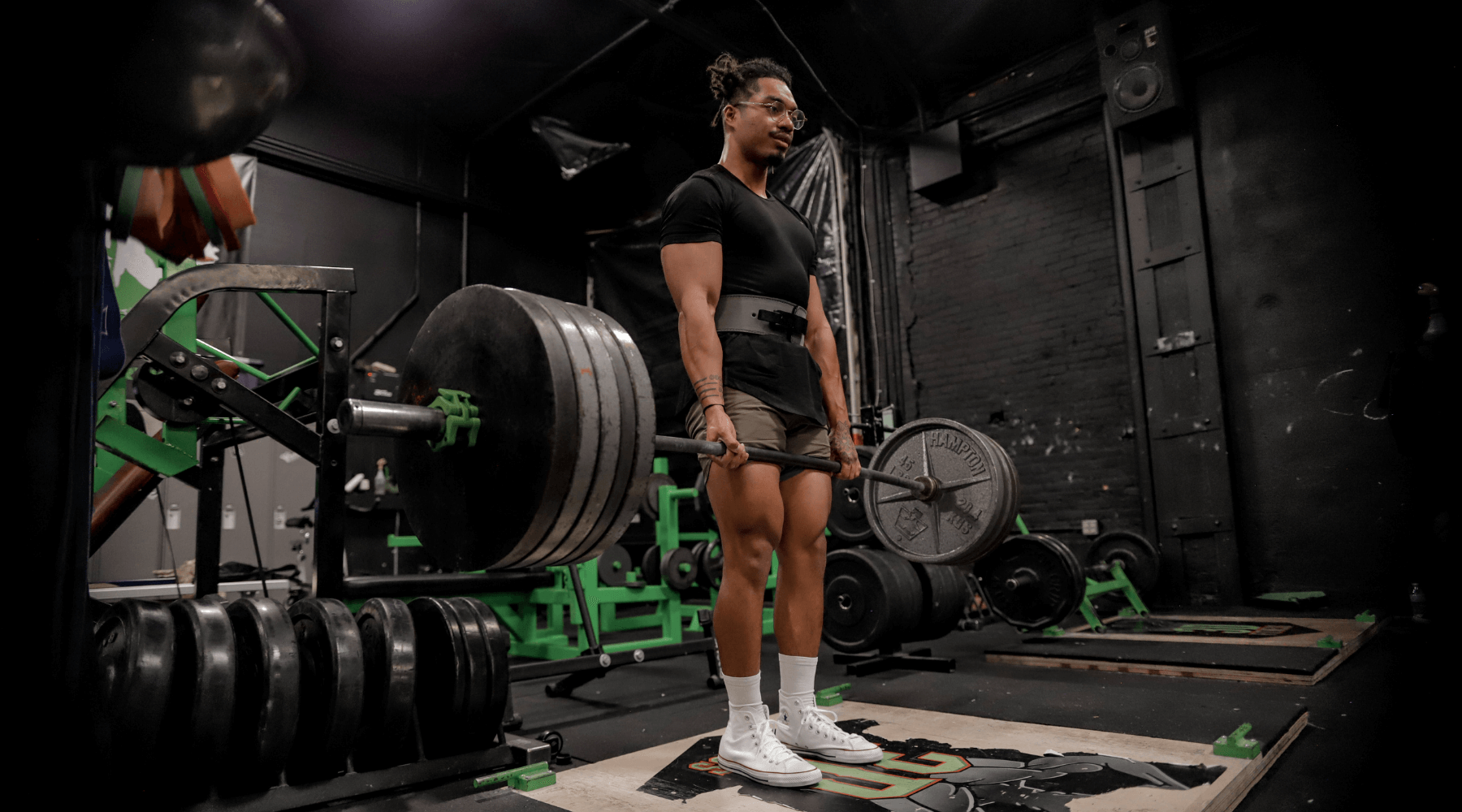How many training programs do you think there are out there? Hundreds, if not thousands, right? Training programs can be a great way to build size, definition, and strength, but there’s really no one-size-fits-all program. That’s because we’re all different and what works for me might not work for you.
But there is one common approach to strength training that brings us back to the basics. By focusing on compound moves like squats, bench presses, and deadlifts in a strength program, it becomes the foundation for all future training.
Mark Rippetoe, the bestselling author of Starting Strength: Basic Barbell Training, tells us that doing strength training with compound moves can result in strength gains more quickly.
With decades of experience and coaching, Mark believes that a simple training program is essential for anyone, whether novice or advanced because it paves the way for success in future development.
In this article, we will focus on what compound movements are, the benefits of compound exercises, the three major compound movements (squats, bench press, and deadlifts), some example programs, and how you can build your own routine.

What are compound movements?
Compound movements are seen as the key to strength development. They’re moves that can make your workout go from good to great. Compound movements can be described are ones that use multiple muscle groups and joints simultaneously.
Compound movements are designed to help achieve lean muscle mass and burn calories. Not to mention the fact that they can save you time at the gym or wherever you choose to work out.
As we mentioned above, compound moves use multiple muscle groups, which differs from isolation exercises (like lateral raises) because they focus on a single muscle group. You can also perform compound moves in an alternate approach, where you combine moves into one exercise.
For the purpose of this article, we will focus on compound moves that involve squats, bench press, and deadlifts.
What are the benefits of compound movements?
Even if you’re not a beginner and have some experience under your belt, compound strength training is still important for perfecting technique and future muscle development. Even as an experienced lifter, compound strength training can still be effective in making progress.
How? According to research, you're continually putting mechanical and metabolic damage to your muscle fibers, which release all sorts of responders in the brain and body (1).
This is why you end up building more muscle versus just doing isolation exercises. That’s not to say that isolation exercises aren’t good, but they typically best for developing a specific muscle.
For overall muscle mass, compound moves are a much better route. And who doesn’t want more muscle mass? What’s also great about compound moves is that they help burn more fat when you’re resting. That’s because the muscles worked require more energy to function, increasing your basal metabolic rate (BMR) (2).
Major compound movements
As we mentioned previously, our focus today will be on three major compound movements — the squat, bench press, and deadlift. The reason these are so important and the topic of this article is that they bring you back to the basic level of training and really help push strength and muscle mass development.
A strong Strength Training Program also focuses on these key muscle groups during an incremental three-day per week schedule. The main purpose of a program like his is to increase more weight over time, which builds muscle and strength. Let’s cover the three major compound movements for strength development.
1) The Squat
Although it looks like an easy movement, squats have a hidden struggle that’s often overlooked — the squat form. It’s such an important part of long-term training.
Squats are a compound move, as they involve the use of multiple muscles and joints (knees, hips, and legs) that work the entire body. The added benefit of squats is that they help improve the strength and muscles of the mentioned joints.
There are different types or squat variations such as the back squat, front squat, and bodyweight squat. In this article, the focus is on the standard back squat form. The biggest aspect to remember with the squat form is to engage the hips and knees at the same time, keeping the chest high, and using your upper leg muscles to push you back up.
2) Bench Press
A staple in almost every training routine is the bench press. Performing the bench press move helps build chest muscles, but also triceps and shoulders. The form is also important when performing a bench press, but there are variations that can be done. Some use dumbbells or a Smith Machine as an alternative to barbell bench press. For strength training, a barbell bench press is the recommended move.
While the bench press seems pretty straightforward, there are some things to remember for proper form. For example, make sure to have a slight bend in the spine, with your feet flat on the floor. Keep a slightly wider grip on the bar (wider than shoulder-width) and angle the upper arms to 45 degrees. Focus on the breathing, exhaling as you push up towards the ceiling. It may also be good to have a partner or spotter to avoid potential danger.
3) Deadlift
The final compound movement we’re focusing on is the conventional deadlift. This is one of the best exercises that can be done to benefit the full body. The reason being, again, is that it uses multiple muscle groups all at once. There are variations to this move as well, such as the Romanian deadlift, straight leg, sumo deadlift, and the conventional.
For the conventional deadlift, start with a shoulder-width stance. The barbell should be at the starting position on the ground. Your grip should be just outside your legs, head in-line with your spine, strong core, and as you stand (finish the move) make sure you’re careful to avoid hyperextending your back. The power should come from a combination of your back and hips.
Worthy Strength Programs
We’ve referenced the strength training program by Mark Rippetoe which has been used by beginners and advanced trainers. Mark has been active in the fitness industry since the late 70s and has developed an exercise plan that focuses on compound movements such as squats, bench press, and deadlifts.
His program is separated into three phases, where phase one lasts from one to three weeks, progressively moving up/adding weight to each compound movement. Mark Rippetoe's program includes weekly workouts with a breakdown of sets and reps.
If you don’t think that Mark’s program is adaptable to your plans, there’s an intermediate plan by Bill Starr named the Mad Cow program, which is preferred by those who’ve hit a plateau. The basis of this training program is that you’re progressively increasing weight (2.5%) on every set (and each week).

How to plan your own routine
At this point, you’ve probably referenced the two most popular strength training programs and likely done additional research. So it’s time that you put it all together and try it out, right? Before you implement this for yourself, here’s what you need to know and how to plan accordingly:
1) Evaluate your current stage
Before you can get serious about your routine and progress, you need to face facts about your fitness level. Where are you right now and what does the roadmap look like for you?
If you’re a beginner, you’ll make faster progress than someone who is an intermediate or advanced level. How do you know your level? Look at your weight and lifting capabilities, and if it’s not significant than start over (as a “beginner”).
2) Choose your exercises
We’ve focused on three major compound movements in this article, and we suggest you start with those. The programs we mentioned above also focus on the big three — squats, bench press, and deadlifts.
Implementing those movements or variations of them, along with some accessory work (if you want) will give you overall strength.
If you’re at an intermediate or advanced level, you’d include moves (or weights) that apply to your overall fitness vision (bodybuilding, powerlifting, etc).
3) Routine setup
Having a planned routine is crucial to progression and muscle mass. No matter your fitness level, making progress should be the key focus. If you’re a beginner, you want a routine that will call for progression from workout to workout. If you’re split is to bench every other day, you’d want to increase the weight from the last workout.
For the intermediate level, focus on increasing the load weekly because your body is good at adapting to the workouts. Shoot for a weight that challenges you but isn’t causing you to max out on each move every day. For advanced level trainers, adopt a similar approach but on a monthly or quarterly basis.
4) Training frequency and intensity
Having a better idea about your routine gets you ready to determine how frequently and intensely you’ll work out. Most programs suggest doing a full-body routine in a three-day split.
For example, if you chose Mondays, Wednesdays, and Fridays and started with the squats, bench, deadlift split sequence, you’d increase the weight each rep, each day (whether it’s five or ten pounds). The point here being is that you want to have an adequate workload so you’re constantly challenging the body.
5) Decide on the reps
This portion will depend on the individual because we’re all built differently. For most beginners, the repetitions on compound moves range from five to eight. Most start out with three to five sets.
The program by Mark Rippetoe has a 5x3 split (5 reps, 3 sets) for compound movements like squats, bench press, and deadlifts. Having this foundation will prove successful with moving onto more advanced weight training such as powerlifting and serious bodybuilding.

Buy Premium Elbow Sleeves
Effectiveness of Compound Movements
In this article, we talked a lot about what compound movements are, the benefits of compound exercises, the three major compound movements (squats, bench press, and deadlifts), some example programs, and how you can build your routine.
The biggest thing to remember is that no matter what fitness level you might be at, sticking to these basics will build muscle mass and increase your strength. Whether you’re looking for a new program or just trying to get back to the basics, you’ll want to put the three essential compound movements (squat, bench, and deadlift) into your routine.
References
- McCall, P. (2021). Want Results from Exercise? Know Your Muscle Fibers! - Fitness. Retrieved 22 July 2020, from https://petemccallfitness.com/how-to-get-results-from-exercise/
- How Many Calories Do I Burn in a Day?. (2021). Retrieved 22 July 2020, from https://www.healthline.com/health/fitness-exercise/how-many-calories-do-i-burn-a-day#harris-benedict-formula
- Madcow 5×5: The Most Effective Workout for Intermediate Lifters | StrongLifts. (2022). Retrieved 22 July 2020, from https://stronglifts.com/madcow-5x5/














Leave a comment
All comments are moderated before being published.
This site is protected by hCaptcha and the hCaptcha Privacy Policy and Terms of Service apply.